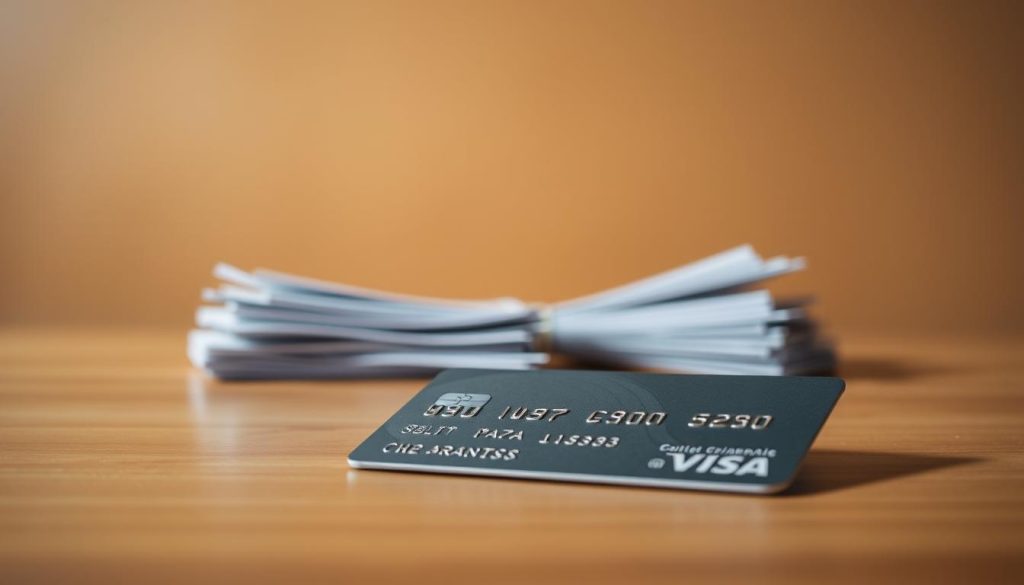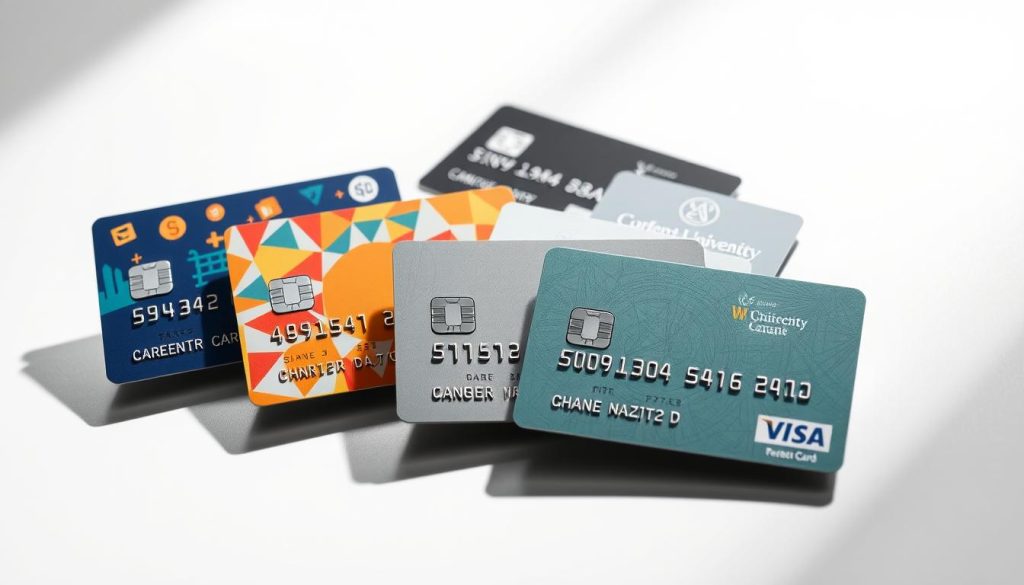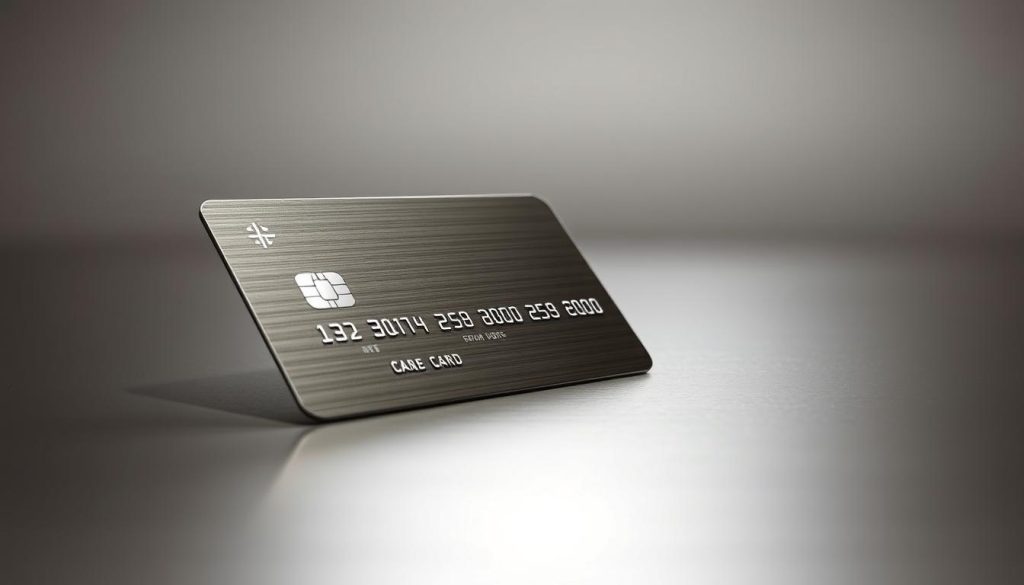Using credit card balance transfers can help you pay off debt quickly. By moving your balance to a card with a lower interest rate, you save money. This can also improve your credit score by consolidating your debt.

Credit card balance transfers are a popular choice for debt consolidation. They offer a lower interest rate compared to your current card. If done right, they can be a key part of your debt strategy, helping you pay off your balance and boost your credit score.
Introduction to Credit Card Balance Transfers
Before getting a balance transfer card, it’s important to know how they work. You should check if a balance transfer is good for you. Look at interest rates, fees, and credit limits to make sure you’re using them wisely.
Key Takeaways
- Credit card balance transfers can help you pay off debt faster and save money on interest rates.
- Debt consolidation through credit card balance transfers can improve your credit score.
- Understanding how credit card balance transfers work is crucial before applying for a balance transfer credit card.
- Considering factors such as interest rates, fees, and credit limits is essential for a successful debt consolidation strategy.
- Credit card balance transfers can be a valuable tool in your debt consolidation strategy.
The Current State of Credit Card Balance Transfers in 2024
Thinking about using credit card balance transfers to pay off debt? It’s key to know the current credit card offers. Many cards offer 0% introductory APRs. This lets you transfer your balance and pay off debt without interest for a set time. But, watch out for balance transfer fees, which can be 3% to 5% of the amount transferred.
When looking at credit card offers, focus on interest rates and fees. Seek cards with low or no balance transfer fees and 0% introductory APRs. Citi and Chase are among the top companies for balance transfer deals. Check their websites for the latest offers and find the best one for you.

Recent changes in interest rates have made finding good credit card offers harder. To find the best deals, compare different cards. Look at interest rates, fees, and credit score needs. By choosing wisely, you can use balance transfers to pay off debt efficiently.
When picking a credit card for balance transfers, consider these key factors:
- Introductory APR and duration
- Balance transfer fee
- Regular APR and interest rates
- Credit score requirements
By carefully looking at these factors and picking the right card, you can use balance transfers to pay off debt. This will help improve your financial health.
Understanding Credit Card Balance Transfers
Understanding credit card balance transfers is key. They let you move your debt to a new card with a lower rate or 0% APR. This can help you debt consolidation by making one payment instead of many.
For a successful transfer, pick a card with a low or 0% APR. Know the transfer terms well. Also, watch out for fees, which can be 3% to 5% of the amount moved. The right card can save you money and help you pay off debt faster, boosting your credit score.
Here are some benefits of credit card balance transfers:
- Save money on interest rates
- Potentially lower monthly payments
- Debt consolidation into one monthly payment
- Opportunity to improve your credit score

By understanding balance transfers and picking the right card, you can manage your debt. Always read the fine print and know any fees or charges.
Benefits of Strategic Balance Transfer Planning
Managing debt can be easier with a smart balance transfer. Moving your balance to a card with a lower rate saves you money on interest. This lets you focus on debt elimination. It can also boost your credit score if you pay on time and use your credit wisely.
One big plus of balance transfers is the interest savings they offer. Switching to a lower rate card cuts down your interest payments. This speeds up your debt payoff. Use a potential interest savings calculator to see how much you could save.
- Choose a credit card with a lower interest rate than your current card
- Consider the length of the introductory period and the regular interest rate that will apply after it ends
- Make timely payments to avoid late fees and negative impacts on your credit score
Follow these tips for a successful balance transfer plan. This way, you can manage your debt better and work towards debt elimination. Always check your credit score and adjust your plan as needed for the best results.
How to Choose the Right Balance Transfer Card
Choosing the right balance transfer credit card is key. Your credit score affects the interest rates you get. So, check your score before applying. Look for cards with low or 0% introductory APRs to save on interest.
When picking a card, consider the balance transfer fee, credit score needs, and rewards. Also, look at the card’s terms and conditions. This includes the intro APR period and any late payment penalties. By thinking about these, you can find a card that helps you pay off debt faster and saves money.
Here are some tips for choosing a balance transfer credit card:
- Compare different balance transfer credit cards to find the best offer for your needs
- Consider the length of the introductory APR period and the regular APR that will apply after the introductory period ends
- Look for cards with low or no balance transfer fees
- Evaluate the credit score requirements for each card to ensure you qualify
Follow these tips and consider your options carefully. This way, you can pick the right balance transfer credit card. Always review the card’s terms and conditions. Think about interest rates and rewards to find the best card for you.
Steps to Complete Your Balance Transfer Successfully
To finish your balance transfer, you need to collect some important documents. These include your credit card application, ID, and proof of income. This info helps you move smoothly through the balance transfer process.
When you apply for a credit card, you’ll share personal and financial details. Make sure you have all your documents ready to avoid any hold-ups. The time it takes to complete the balance transfer varies. It depends on the credit card company and how complex your application is.
Here are some important steps to remember:
- Gather required documentation, such as identification and proof of income
- Submit your credit card application and wait for approval
- Initiate the balance transfer process, which may take a few days to a few weeks
It’s important to keep an eye on your application’s progress. You can check online or call the credit card issuer. By following these steps and avoiding common mistakes, you can successfully transfer your balance. This will help you save money on interest.
Always read your credit card agreement carefully. This way, you’ll understand the balance transfer terms and avoid any issues. It’s key to make the most of your balance transfer.
Hidden Costs and Considerations
When you think about moving your credit card balance, remember the hidden costs. Balance transfer fees can be 3% to 5% of the amount you move. This can quickly add up. Also, the rates after the introductory period can be much higher.
Think about how a balance transfer might affect your credit score. It can change your credit utilization ratio, which is important for your score. To avoid big costs, compare different credit card offers. Look for the lowest fees and best rates after the intro period.
When looking at balance transfer offers, consider these points:
- Balance transfer fees: Are they competitive with other offers?
- Post-promotional period rates: Will they be higher than your current interest rate?
- Credit account impact: How will the transfer affect your credit utilization ratio and overall credit score?
By carefully looking at these factors, you can decide if a balance transfer is good for you.
Conclusion: Maximizing Your Balance Transfer Strategy
Starting your balance transfer journey is a big step towards getting rid of debt and boosting your credit score. This financial tool can save you a lot on interest and help you reach financial freedom faster.
It’s important to plan carefully based on your financial situation. Look for the best balance transfer offers, understand the terms, and pick the right card for you. With careful planning and discipline, you can make the most of balance transfers and reach your debt goals.
Keep in mind, your credit score is very important. Managing your balance transfers well can protect and even improve it. Avoid mistakes like missing payments or going over your limit, and always check your credit report.
In the end, a good balance transfer strategy is about controlling your money and making smart choices. By following the advice in this article, you can successfully manage balance transfers and achieve a debt-free life.
FAQ
What is a credit card balance transfer?
Moving your outstanding balance to another credit card is called a balance transfer. It’s done to get a lower interest rate or special deals.
How can a balance transfer help me pay off debt faster?
Transferring to a card with a lower rate saves you money on interest. This means more of your payment goes towards the principal. This speeds up debt repayment.
What factors should I consider when choosing a balance transfer card?
Look at the introductory APR, fees, and credit score needs. Also, check for any rewards or perks. Comparing different cards helps find the best one for you.
How does a balance transfer affect my credit score?
Balance transfers can affect your score in two ways. They might lower it due to a hard inquiry. But, paying down debt can improve your score over time.
What are the common mistakes to avoid when applying for a balance transfer?
Don’t overlook the fine print, miss the promotional period, or make late payments. Also, avoid new purchases during the low-interest period.
How can I maximize the benefits of a balance transfer?
Pay off your debt before the low rate ends. Don’t make new purchases on the card. Keep an eye on your credit and payments.
What are the hidden costs and considerations of a balance transfer?
Watch out for fees, higher rates after the promo, and how it affects your credit. Always read the terms and conditions carefully.


